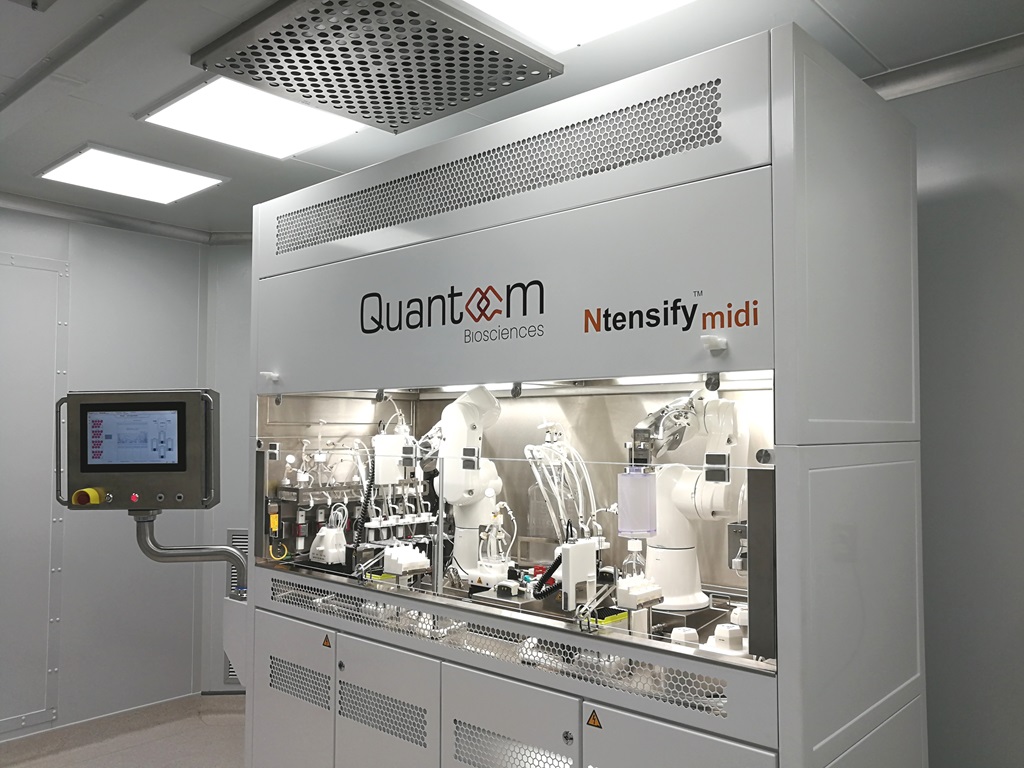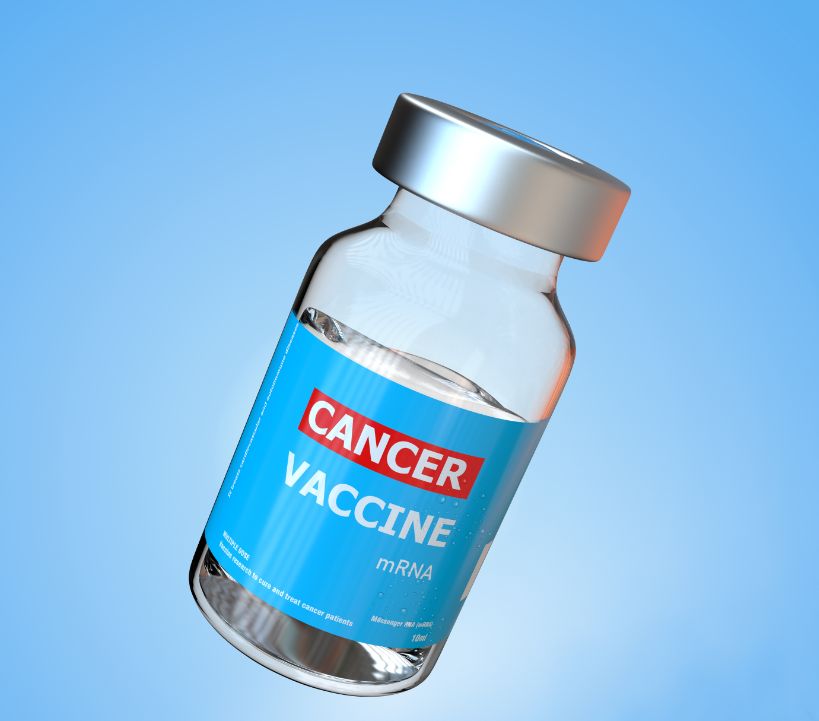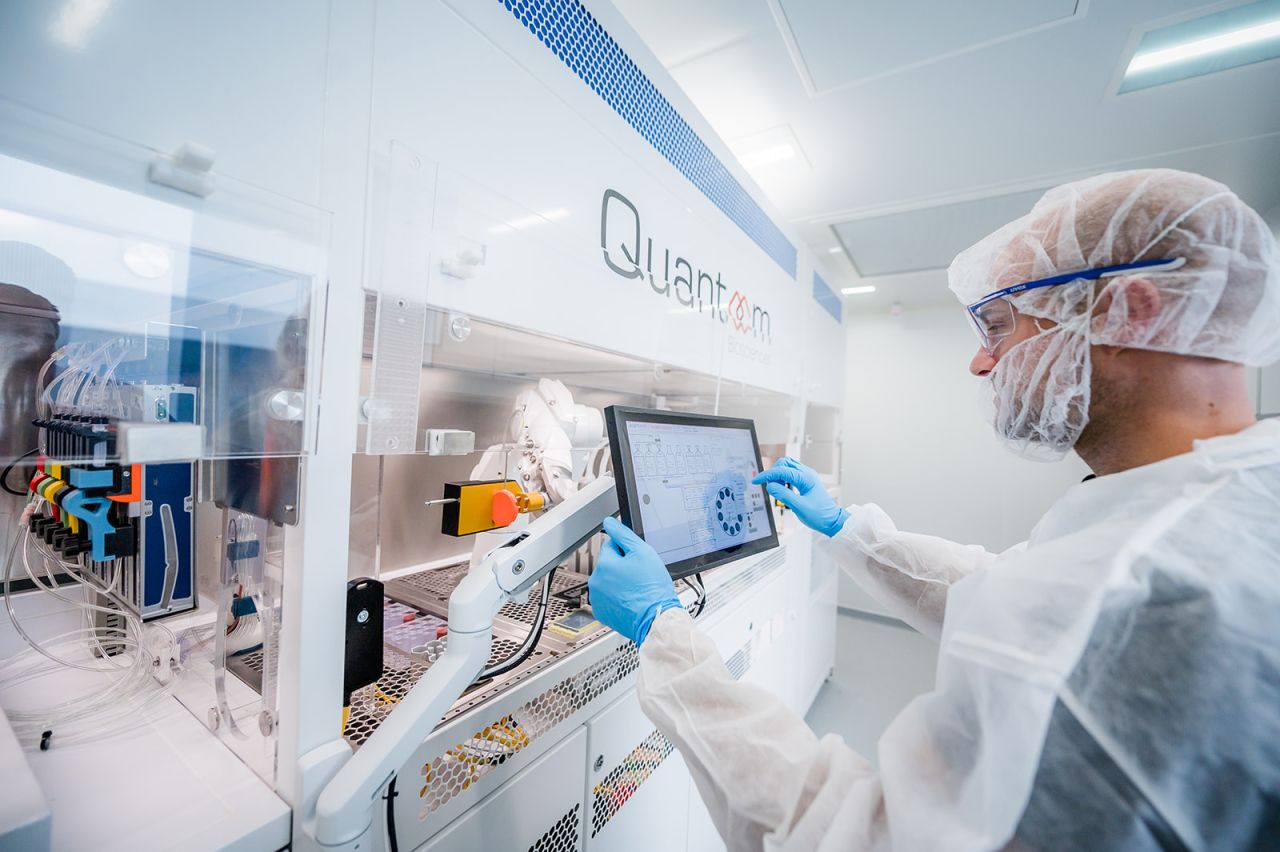Articles
October 30, 2021
Vaccines Development and Manufacturing Centres (VDMC) for Autonomy and Pandemic Readiness

Table of Contents
Global Health Insights
1. GLOBAL RESPONSE TO COVID-19
COVID-19 has resulted in unprecedented global demand for vaccines. To reach the coverage required for herd immunity, we need at least 5 billion vaccines per year. Epidemics and pandemics in the past have led to surges in public interest in vaccine production capacity, but interest wanes as the threat diminishes. Previous efforts, for example after H1N1, used technologies that were too expensive and not flexible enough to accommodate uncertainty.
Vaccines were developed for COVID-19 at unprecedented speed. Over 100 vaccine candidates have led to 13 authorized vaccines. However, manufacturing remains a bottleneck. The traditional model of vaccine development and procurement has resulted in a small number of big players. The traditional technologies used are not optimized for rapid, large-scale production or to adapt to produce different products.
High-income countries have deployed billions of dollars to support scale up; but these have not addressed the supply shortage for low- and middle-income countries (LMICs) that have experienced many vaccine-related problems during the COVID-19 pandemic: delayed supply, vaccine formulations unsuited for the local environment, and interruptions to routine immunization. In response, Africa’s policy-makers have made home-grown manufacturing a priority through initiatives such as the Partnership for African Vaccine Manufacturing (PAVM), and other global health entities like the WHO have followed suit . Scaling up traditional technologies will not be enough. For complex products like vaccines, it is difficult to change manufacturing processes post-approval (and during a pandemic, approvals are accelerated). Laboratory based manufacturing processes simply do not scale easily.
As such, new bioproduction infrastructure for pandemic resilience needs to be flexible and able to react to changing needs, with manufacturing technologies that can scale from clinical development to global supply seamlessly. We need a new approach.
2. STRATEGIC BENEFITS OF VDMCs
For pandemic preparedness, the WHO recommends building national capacities for both R&D and bioproduction.
Sped up by COVID-19, high income countries were already working to establish VDMCs; for example, the UK’s Vaccines Manufacturing and Innovation Centre (VMIC), and the US’s Biomedical Advanced Research and Development Authority (BARDA) are setting up multiple centers to develop and manufacture biologics for emergency response.
These VDMCs, or pandemic hubs are designed to transition quickly and cost effectively between different products. High-income countries are willing to fund these sites due to the strategic importance of autonomy. They also combine adaptable manufacturing platforms with in-country development capabilities. This model could and should be extended to LMICs, supporting the development of locally relevant products.
Advances in Manufacturing Technologies
As a result of H1N1 in 2009, leading health organizations identified that pandemic readiness required non-traditional technologies for developing vaccines, such as RNA. These technologies are now available, making biomanufacturing more cost-effective, more systematic, and more predictable.
Historically, vaccine production has achieved low-cost through large-scale for a specific product. Modern manufacturing technologies are re-engineered to be flexible – meaning a range of vaccines can be produced with the same equipment.
They also “intensify” production, where concentrated product means facilities can make lots of doses on a small footprint. The benefits of this approach include lower set up and operating costs, as well as environmental benefits like lower utilities use and reduced shipping.
Further, by “chaining” or linking together all the different steps of production, these solutions can reduce biohazard risk and the need for trained personnel.
Finally, having different reactor sizes compatible with the same equipment and with the same process, enables VDMCs to use the same approach from bench to batch.
UNIVERCELLS AND ITS AFFILIATE COMPANIES WERE CREATED TO ADDRESS THIS PROBLEM.
Effective Technology Transfers
Alongside physical infrastructure, lack of trained personnel is another barrier to rapid development and supply of vaccines. For complex biological products, significant training and know-how is needed.
This is especially true for traditional approaches that use manual technologies. Novel, automated production platforms reduce the personnel needed.
Nonetheless, VDMCs will need scientists, operators, engineers, and managers, as well as local quality and regulatory competencies. The creation of these capacities in one VDMC could be supported as part of a network of sites with similar equipment, working together with common operational support services.
Coupled with digital tools like virtual reality “twins” and digital monitoring systems, this would allow established sites (hubs) to offer digital quality management services, remote training and troubleshooting to partners.
Pandemic response is complicated and difficult. Even for established vaccines that are transferred to new sites – like AstraZeneca to FioCruz in Brazil or Serum institute of India. Tech transfer must include establishing local capabilities for monitoring the quality of the product throughout the manufacturing process.
This shows the importance of adequate support in the adoption and operation of vaccine technologies, as well as collaboration with local and international regulatory authorities.
Pandemic Resilience and the Bioproduction Ecosystem
Research, innovation, and global coordination are critical for vaccine development and pandemic resilience.
VDMCs can offer additional value to public bodies and private industry by creating a regional bioproduction ecosystem, filling existing gaps in vaccine production for a range of global health or biosecurity needs; and by providing a sustainable solution for supporting national and regional autonomy for key vaccines and future disease management.
Building on precedent in high-income countries, and as part of their efforts to expand LMIC COVID-19 capacity, the WHO have championed a hub-and-spoke model to transfer technology and training to LMICs.
Imperial College London has also promoted a similar concept – the “software-hardware” model – whereby a global network of validated production processes and GMP competencies, would allow for rapid roll-out of new vaccine products on the same manufacturing platforms. Currently, the licensing and regulatory landscape does not accommodate this approach, but this is changing.
After H1N1, the WHO established a training center for pandemic influenza vaccines, and there are multiple regulatory harmonization initiatives ongoing today.
3. VDMCs: REQUIREMENTS AND SUSTAINABILITY
Warm Ready: Operational Sustainability
During pandemics, the business case for VDMCs is obvious: providing readily available development and manufacturing to support rapid supply of vaccines. However, VDMCs also have options for revenue and impact generation outside pandemics:
1. Manufacture of Vaccine Products for Routine Immunization
VDMCs can manufacture biological products to meet non-pandemic public health needs, including stockpiled vaccines for pediatric needs and beyond (rabies, yellow fever) or those for routine immunization. This may also include fill-finish capabilities, importing bulk from an international partner. The African continent aims to have 60% of Africa’s routinely used vaccines to be made in Africa by 2040. This supports autonomy and brings a host of economic benefits.
2. Contract Development and Manufacturing Services
The global Contract Development and Manufacturing Organization (CDMO) market will grow to US$ 160 billion in 2025, though smaller in LMICs ($4 billion in Africa and $9 billion in Latin America in 2017). There is no default reason that US and European operators should capture that growth.
3. Reservation Fees
National governments have an interest in ensuring the state has access to VDMC capacity for pandemic response – as such, they may pay reservation fees to reserve first option on manufacturing capacity in the event of a pandemic.
4. Workforce Training
As a regional hub the VDMC may act as a training centre for other sites, public or private. By establishing a knowledge hub with human resources – bioproduction operators, engineers, process and product management, quality – the VDMC can promote the creation of an ecosystem with subject matter experts, who can then be used to provide training services to other partners and customers for a fee.
Given the importance of such capacity to national health security and the value of human life, there is a strong argument that VDMCs should be supported entirely by public or donor funds. However, recognizing that there are resource limitations in many LMICs, the above examples illustrate that there are ways to supplement the funding needed with revenues.
CONCLUSION
Global action triggered by the current pandemic provides an opportunity to put structures in place to support sustainable health systems.
New technologies and collaborative structures mean that with the current momentum, a vaccination production ecosystem incorporating VDMCs can succeed where others failed in establishing capacity for current and future epidemics, pandemics and endemic disease.
Had a global network of VDMCs existed in 2019, the challenges of scaling up COVID-19 vaccine supply could have been avoided.
Needed vaccine products would be reaching those who need them – potentially saving millions of lives.
Echoing the views of key global health stakeholders, Univercells believes that autonomy of bioproduction for key health products and pandemic resilience, can be achieved by the creation of VDMCs under a hub-and-spoke model.
Other articles

March 05, 2024
Advancing Equitable Vaccine Access: mRNA Technology Transfer Program’s Role in Democratizing Vaccine Development and Production.

December 11, 2023
Novel continuous RNA manufacturing process could pave the way for personalized neoantigens cancer treatments

September 11, 2023


Share